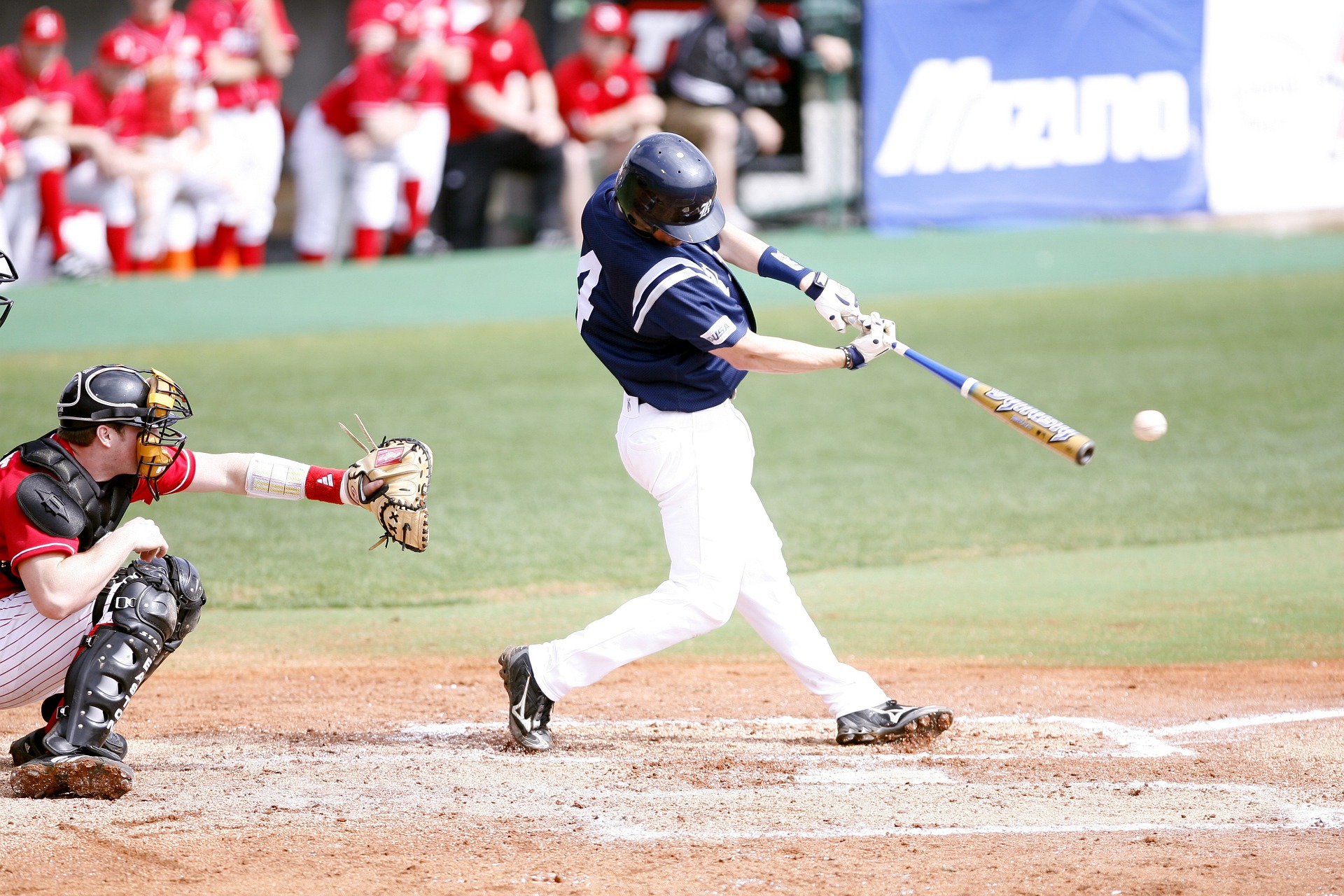Decoding the Mechanics of the Perfect Curveball
The art of throwing a curveball has mesmerized baseball fans and baffled batters for over a century. This iconic pitch, with its deceptive trajectory and sudden break, represents the pinnacle of a pitcher's craft. But what exactly happens when a curveball is thrown, and how do elite pitchers manipulate the laws of physics to their advantage? Let's dive into the fascinating world of aerodynamics, biomechanics, and the subtle artistry behind one of baseball's most enigmatic pitches.

The Birth of the Curveball: A Historical Perspective
The origins of the curveball are shrouded in baseball lore, with multiple players claiming to have invented the pitch in the mid-19th century. However, most baseball historians credit Candy Cummings with introducing the curveball to the sport in the 1860s. Cummings, fascinated by the curved flight of seashells he threw while at the beach, wondered if he could replicate that movement with a baseball.
The introduction of the curveball was met with skepticism and controversy. Many players and fans initially believed that such a pitch was impossible, attributing its perceived movement to optical illusions or cheating. It wasn’t until the 1870s that the curveball gained widespread acceptance, revolutionizing pitching strategy and forever changing the dynamics of the game.
As the 20th century progressed, pitchers refined their curveball techniques, leading to variations like the 12-6 curve, the slurve, and the knuckle curve. Each iteration sought to maximize the pitch’s effectiveness by manipulating its spin, velocity, and release point. The curveball’s evolution mirrors the broader development of baseball strategy, showcasing how innovation and scientific understanding can transform athletic performance.
The Physics Behind the Curve: Understanding Magnus Force
At the heart of the curveball’s mystique lies a principle of fluid dynamics known as the Magnus effect. Named after German physicist Heinrich Magnus, this phenomenon describes the sideways force exerted on a spinning object moving through a fluid (in this case, air). When a pitcher throws a curveball, they impart a rapid spin on the ball, typically between 1,500 and 3,000 rotations per minute.
As the ball travels towards home plate, its spin creates areas of high and low air pressure around it. On one side of the ball, the spinning motion drags air in the same direction as its travel, increasing air speed and decreasing pressure. On the opposite side, the spin works against the airflow, creating a higher-pressure zone. This pressure differential results in a force perpendicular to the ball’s trajectory, causing it to curve.
The amount of curve depends on several factors:
-
Spin rate: Higher spin rates generally result in more pronounced curves.
-
Velocity: Counterintuitively, slower pitches often curve more due to increased time for the Magnus force to act.
-
Air density: Curveballs break more sharply in thinner air, which is why pitches behave differently at higher altitudes.
-
Seam orientation: The raised seams on a baseball can affect air flow and enhance the Magnus effect.
Understanding these principles allows pitchers to manipulate their curveballs for maximum effect, creating pitches that seem to defy the laws of physics as they approach the plate.
Biomechanics of Throwing a Curveball: From Wind-Up to Release
Throwing an effective curveball requires a complex sequence of biomechanical movements that must be executed with precision and consistency. The process begins with the pitcher’s wind-up, a crucial phase that sets the foundation for the pitch’s power and deception.
During the wind-up, the pitcher’s body coils like a spring, storing potential energy. As they move into the delivery phase, this energy is transferred through a kinetic chain, starting from the legs, through the core, and finally to the throwing arm. The key to generating the necessary spin for a curveball lies in the final moments before release.
Just before letting go of the ball, the pitcher snaps their wrist and fingers downward and to the side. This motion imparts the topspin that’s characteristic of a curveball. The exact angle and force of this snap can vary depending on the desired break and the pitcher’s individual style.
The release point is critical for both effectiveness and pitcher health. Releasing the ball too early or too late can reduce the pitch’s movement and potentially strain the elbow or shoulder. Elite pitchers spend years refining their release point to find the perfect balance between maximum break and minimal injury risk.
Recent advances in motion capture technology and biomechanical analysis have allowed coaches and players to fine-tune these movements with unprecedented precision. By studying the mechanics of successful curveball pitchers, researchers have identified optimal arm angles, trunk rotations, and finger positions that contribute to a devastating breaking pitch.
The Art of Deception: How Curveballs Fool Batters
The curveball’s effectiveness isn’t solely due to its physical movement; much of its power lies in its ability to deceive the batter. When a curveball is thrown correctly, it creates an optical illusion that makes it incredibly difficult for the batter to judge its trajectory and timing.
As the pitch approaches, the batter’s brain attempts to predict its path based on initial velocity and trajectory. However, the sudden break of a curveball defies these expectations, often causing the batter to swing over or under the ball. This deception is enhanced by the fact that the human eye struggles to track the rapid spin of a baseball in flight.
Neuroscientists have studied this phenomenon, revealing that batters often make decisions about whether to swing based on the first 20 feet of a pitch’s flight. For a well-thrown curveball, this early trajectory gives little indication of its eventual break, leaving the batter with precious little time to adjust once the ball’s true path becomes apparent.
Moreover, skilled pitchers use the curveball in conjunction with other pitches to keep batters off-balance. By varying speed, location, and movement, pitchers create a puzzle that batters must solve in a fraction of a second. The threat of a curveball can make fastballs seem faster and change-ups more deceptive, illustrating how a single pitch can influence an entire at-bat.
Training and Perfecting the Curveball: From Amateur to Pro
Developing a effective curveball is a journey that often begins in youth baseball and continues throughout a pitcher’s career. While natural talent plays a role, consistent practice and proper technique are crucial for mastering this pitch.
For young pitchers, the focus is often on developing proper mechanics and arm strength before attempting to throw breaking balls. Many coaches and medical professionals advise against throwing curveballs too early, citing potential risks to developing arm muscles and joints. Instead, they emphasize fastball command and change-of-speed pitches as foundational skills.
As pitchers progress to higher levels of competition, curveball training becomes more specialized. This may include:
-
Grip exercises: Strengthening finger and forearm muscles to enhance spin and control.
-
Long-toss programs: Building arm strength and endurance to maintain curveball effectiveness throughout a game.
-
Video analysis: Using slow-motion footage to identify and correct flaws in mechanics.
-
Spin rate monitoring: Employing advanced technology to measure and optimize ball rotation.
-
Mental training: Developing the confidence and focus needed to throw breaking pitches in high-pressure situations.
Professional pitchers often work with a team of coaches, biomechanists, and sports scientists to refine their curveballs. This collaborative approach combines traditional baseball wisdom with cutting-edge research to push the boundaries of what’s possible with a breaking pitch.
The Evolution of Curveball Analysis: From Eye Test to Statcast
As technology has advanced, so too has our ability to analyze and understand the curveball. In the early days of baseball, pitchers and coaches relied primarily on visual observation and batter reactions to gauge a curveball’s effectiveness. While these methods remain valuable, they’ve been supplemented by an array of high-tech tools that provide unprecedented insight into pitch dynamics.
One of the most significant developments in pitch analysis is the introduction of PITCHf/x and its successor, Statcast. These systems use a combination of cameras and radar to track the velocity, spin rate, spin axis, and movement of every pitch thrown in Major League Baseball. This wealth of data has revolutionized how teams evaluate and develop pitchers, allowing for precise comparisons and targeted improvements.
Key metrics for evaluating curveballs now include:
-
Vertical and horizontal break: Measuring how much the pitch deviates from a straight line.
-
Spin rate: Typically measured in revolutions per minute (rpm), with higher rates generally correlating to more movement.
-
Spin axis: The orientation of the ball’s rotation, which influences the direction of its break.
-
Release point consistency: Ensuring that curveballs are indistinguishable from other pitches at the point of release.
-
Tunneling: How well the curveball’s initial trajectory matches that of the pitcher’s fastball, enhancing deception.
These advanced metrics have not only improved player development but also enhanced fan engagement. Baseball enthusiasts can now dissect pitches with a level of detail previously reserved for professional analysts, deepening their appreciation for the subtleties of the game.
The Future of the Curveball: Innovations and Adaptations
As our understanding of pitching mechanics and ball physics continues to evolve, so too does the curveball itself. Pitchers and researchers are constantly exploring new ways to enhance the effectiveness of breaking pitches, pushing the boundaries of what’s possible on the mound.
One area of innovation is in pitch design, where pitchers work with coaches and analysts to create custom breaking balls that maximize their physical attributes and complement their existing repertoire. This might involve tweaking the spin axis to create a pitch that moves in a unique way or developing a “hybrid” pitch that combines elements of a curveball with other breaking pitches.
Advances in materials science may also play a role in the future of the curveball. While the official baseball specifications are tightly regulated, subtle changes in ball construction or seam height can have significant effects on a pitch’s movement. As manufacturing techniques improve, we may see baseballs that allow for even more dramatic curveball action.
Training methods for curveballs are also likely to evolve. Virtual reality systems are already being used to help batters practice against various pitch types, and similar technology could be adapted to assist pitchers in visualizing and perfecting their curveball trajectories. Wearable technology that provides real-time feedback on arm angle and wrist position could help pitchers make micro-adjustments to their technique mid-game.
The Curveball’s Impact Beyond Baseball: Applications in Other Sports
The principles behind the curveball have applications that extend far beyond the baseball diamond. Many other sports involve projectiles that can be influenced by spin and air resistance, leading to techniques that mirror the curveball in fascinating ways.
In soccer, players use similar physics to bend free kicks around defensive walls or to create swerving corner kicks. The “Magnus effect” is particularly pronounced with the lighter, larger soccer ball, allowing for spectacular curved shots that seem to defy gravity.
Cricket bowlers employ a variety of spinning deliveries that share characteristics with the baseball curveball. The “googly” in cricket, for example, is a ball that spins in the opposite direction to what the batsman expects, creating deception similar to that of a well-disguised curveball.
Even in sports like tennis and table tennis, players use spin to create curved trajectories that make their shots more difficult to return. The topspin lob in tennis, for instance, uses principles akin to those of the curveball to create a high, arcing shot that drops sharply as it approaches the baseline.
Understanding the mechanics of the curveball can provide insights into these and other sports, highlighting the universal nature of certain physical principles in athletic competition.
The Psychology of the Curveball: Mental Game and Pitch Selection
The effectiveness of a curveball isn’t solely determined by its physical properties; the mental aspect of when and how to use this pitch is equally crucial. Successful pitchers must develop a keen sense of game situation, batter tendencies, and their own capabilities to maximize the curveball’s impact.
Pitch sequencing is a critical skill that involves setting up the curveball with other pitches to keep the batter guessing. A well-timed curveball following a series of fastballs can be particularly devastating, as the batter’s timing and eye level are disrupted. Conversely, the threat of a curveball can make a fastball more effective, illustrating the psychological interplay between different pitch types.
The count also plays a significant role in curveball strategy. Pitchers might use the curveball as a “get-me-over” pitch early in the count to steal a strike, or as a putaway pitch with two strikes to induce a swing and miss. The decision of when to throw a curveball often comes down to the pitcher’s confidence in the pitch and their read of the batter’s expectations.
For batters, facing a pitcher with an effective curveball presents a unique mental challenge. They must balance the need to be aggressive against fastballs with the patience required to recognize and adjust to breaking pitches. This battle of wits adds an extra layer of depth to the pitcher-batter matchup, making it one of the most compelling aspects of baseball.
Health Considerations: The Curveball and Pitcher Longevity
While the curveball can be a powerful weapon in a pitcher’s arsenal, it has long been associated with concerns about arm health and injury risk. The debate over whether throwing curveballs increases the likelihood of elbow and shoulder injuries has raged for decades, with conflicting studies and anecdotal evidence on both sides.
Recent research has suggested that the curveball itself may not be inherently more dangerous than other pitch types when thrown with proper mechanics. In fact, some studies have found that fastballs place more stress on the arm due to their higher velocity. However, the repetitive nature of throwing any pitch at high intensity can lead to cumulative stress on the arm over time.
The key factors in maintaining arm health while throwing curveballs appear to be:
-
Proper mechanics: Ensuring that the pitch is thrown with sound biomechanics to minimize unnecessary stress on the arm.
-
Appropriate development: Introducing breaking pitches at the right age and skill level, after a strong foundation of proper throwing mechanics has been established.
-
Pitch count management: Limiting the total number of pitches thrown, particularly for young pitchers whose bodies are still developing.
-
Balanced pitch selection: Avoiding over-reliance on breaking pitches, which can lead to fatigue and increased injury risk.
As our understanding of pitching biomechanics improves, so too do the strategies for throwing curveballs safely and effectively. Many professional organizations now employ sophisticated motion analysis and stress monitoring tools to help pitchers optimize their mechanics and manage their workload.
The Cultural Impact of the Curveball: From Baseball Diamond to Popular Metaphor
The curveball’s influence extends beyond the realm of sports, permeating popular culture and language. The term “curveball” has become a widely used metaphor for unexpected challenges or surprises in various aspects of life. This linguistic adoption speaks to the pitch’s iconic status and its ability to capture the imagination of even non-baseball fans.
In literature and film, the curveball often serves as a symbol for life’s unpredictability or the need to adapt to changing circumstances. Numerous books and movies have used baseball, and the curveball in particular, as a backdrop for exploring themes of perseverance, deception, and the pursuit of excellence.
The curveball has also played a role in scientific education and outreach. Its clear demonstration of physical principles like the Magnus effect has made it a popular subject for science classes and public demonstrations, helping to make complex concepts more accessible through the lens of sport.
Conclusion: The Enduring Allure of Baseball’s Bending Pitch
The curveball remains one of baseball’s most captivating and enduring phenomena. Its blend of physics, athleticism, and strategy encapsulates much of what makes baseball a uniquely compelling sport. From its controversial introduction in the 19th century to its analysis with cutting-edge technology today, the curveball has continually evolved, reflecting broader changes in sports science and culture.
As we look to the future, the curveball will undoubtedly continue to fascinate players, fans, and researchers alike. Whether it’s through new training methods, advanced analytics, or innovative applications in other fields, the principles behind this iconic pitch will continue to yield insights and inspire wonder.
The perfect curveball, with its graceful arc and sudden break, represents more than just a effective pitch; it’s a testament to human ingenuity and the endless pursuit of athletic excellence. As long as there are pitchers toeing the rubber and batters digging into the box, the curveball will remain a central part of baseball’s rich tapestry, challenging our perceptions and defying our expectations with every spin.





